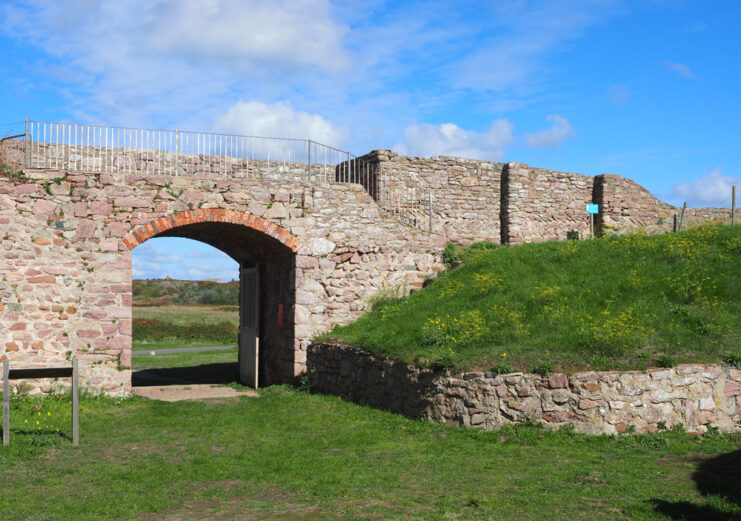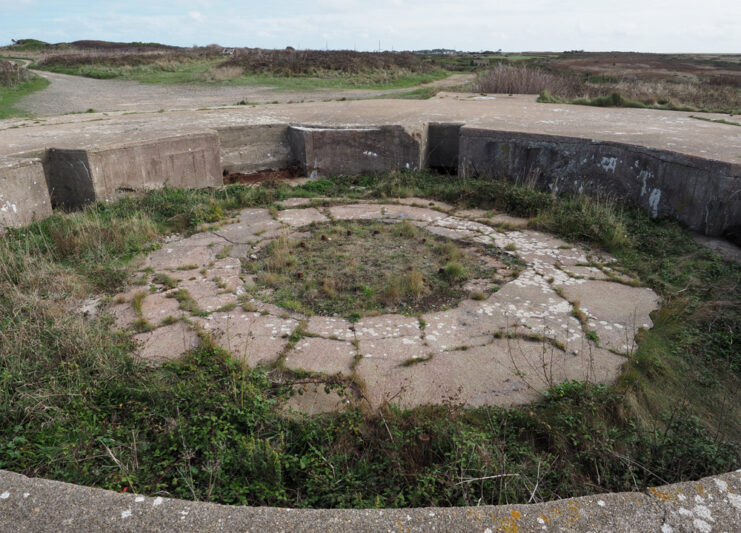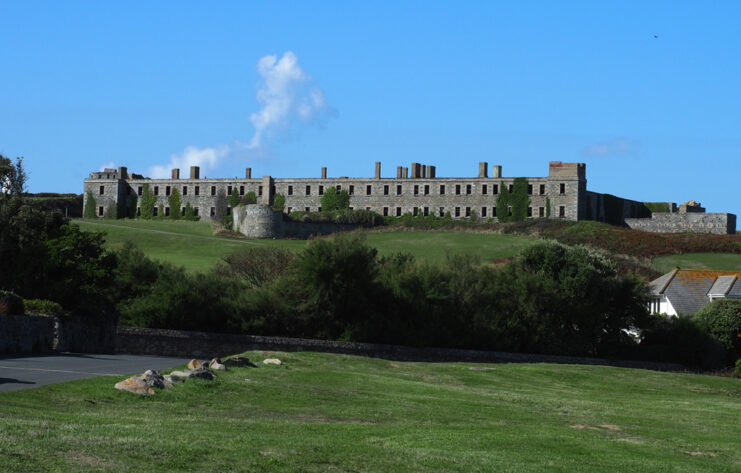Curvaceous soft sandy beaches sit side-by-side with brutalist concrete constructs left over from World War II. These are now reminders of when the island of Alderney, in the Channel Islands, was totally stripped of its resident population in June 1940, becoming completely militarized.

The arrival of German troops in this small group of British Islands, located just off the coast of northern France, signaled the only parts of British soil that the Führer invaded in World War II and keep until his troops were thrown out in May 1945, returning the island population slowly over the next few years.
Alderney is the third largest of the Channel Islands, and, today, still has so many reminders of that period and even from before, when it was fortified in the Roman period, through to Napoleonic and Victorian eras. Being just three-and-a-half miles long and one-and-a-half wide, it has a staggering amount of forts and defensive buildings covering some 2,000 years.

The more recent German defenses are hard to miss, yet there are a number of other buildings from different periods scattered all over the territory. The Romans left a fort at Longis Beach, and the Nunnery Heritage Site has had adaptations from other military periods in its time – the Tudors, British and even German soldiers made this fort their base!
A machine gun slit was cut into the wall by the Germans, in order to defend the beach from invasion during the occupation. Close to the fort is a large concrete bunker forming part of the Resistance Nest at Piratenschloss – or Pirates Castle. The name was given to the Roman fort by the Germans during World War II.
This bunker was armed with a powerful 4.7-cm anti-tank gun, angled to bring devastating fire along Longis Beach and out to sea. It’s the largest of the standard bunkers designed for this type of gun built in the Channel Islands. Overlooking the sandy site, it has separate ammunition, ventilation and crew rooms. The bunker also has a large spent shell room directly below the gun room.

Not too far away is a massive MP3 concrete tower, a German naval range-finding position, which was built by forced laborers under the German occupying power in 1943. It was intended as a naval tower to observe enemy ships and was to be part of a network with five similar towers placed around the island. However, in the end, they were never built.
The rounded front section was for observation and the rear was for accommodation and target plotting.

Very close to the island airport is Battery Annes, which was an open naval gun battery position on the western cliffs. It has four prominent concrete coast artillery emplacements, with personnel shelters and reserve ammunition bunkers nearby. The battery consisted of four powerful 15-cm guns, which aimed to protect the island from any possible invasion.
All of this was to be part of Führer‘s Atlantic Wall, which ran from the coast of Norway down to northern Spain.

Back in Victorian times, one of the largest fortifications was Fort Tourgis. Completed in 1855 and designed to be the largest fort on the island, it helped protect Alderney and its harbor. It housed 346 troops, and it was designed to mount 33 heavy cannons, supported by four 13-inch mortars from nearby Fort Albert.
Over the years, the weapons changed, and the Germans mounted at Fort Tourgis a three-gun 20-mm flak battery, two 10.5-cm beach defence guns and two 7.5-cm Pak Guns, in addition to several searchlights and numerous machine gun positions.
Access is restricted nowadays, so you can only view it from the exterior. That being said, it’s an imposing building and well worth checking out.

More from us: Five-Star Hotel in Guernsey was Once for German Soldiers
Geoff stayed at The Blonde Hedgehog Hotel in Alderney during this trip.
These are just a few sites on the island. There are numerous other structures you’ll come across as you travel around this historical, yet tiny island. For its size, it has an extensive and varied military history.
